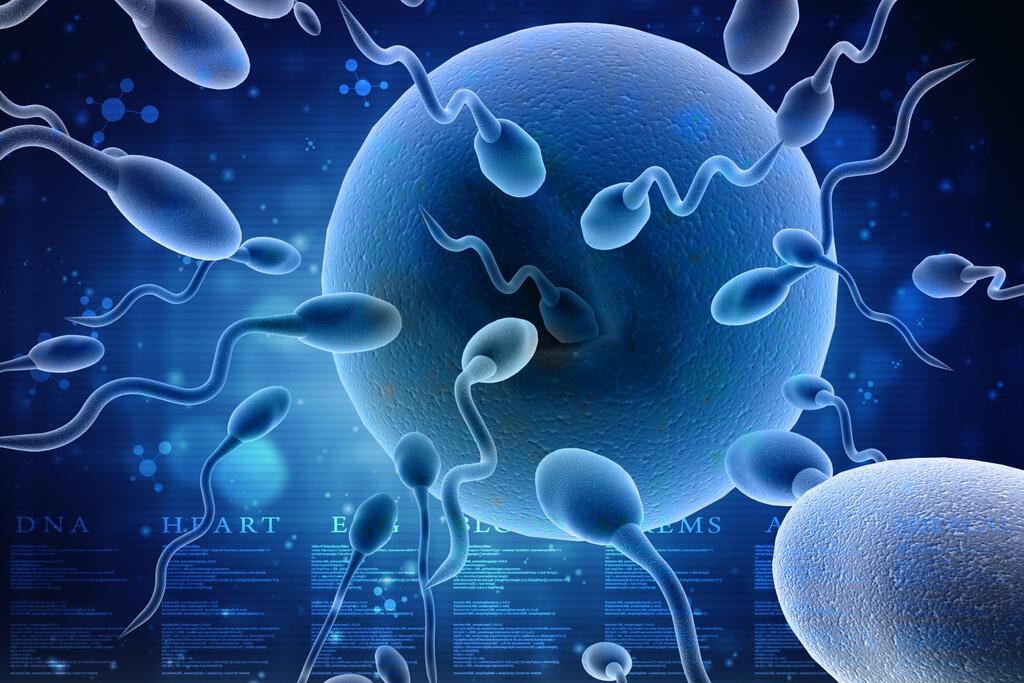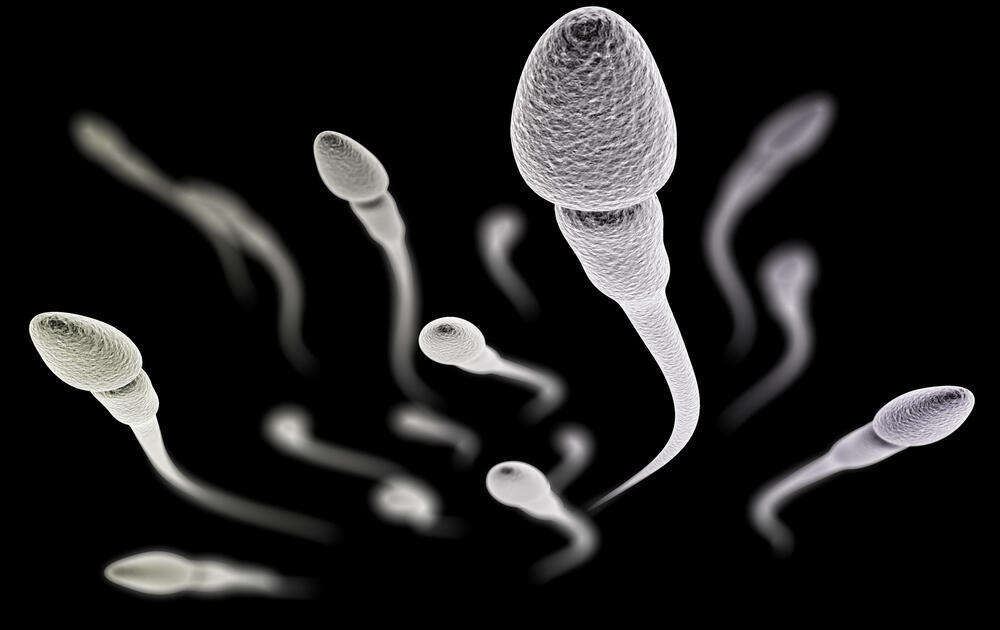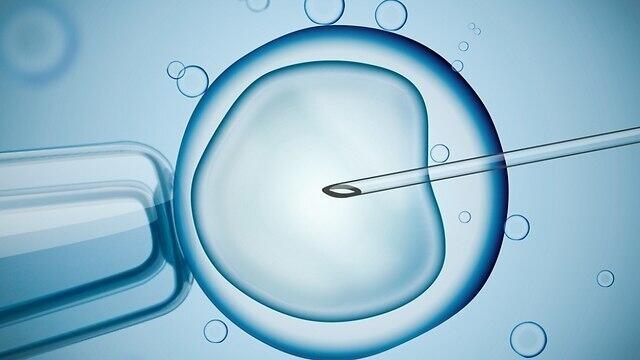From among the hundreds of millions of sperm cells collectively journeying toward the egg cell, only a single one succeeds in its mission to fertilize it. Once the victorious sperm cell penetrates the egg cell, the egg seals itself off, preventing other sperm cells from entering. How is this achieved?
More stories:
A sperm cell comprises two main parts: the head, which contains the genetic material, and the tail, responsible for propulsion. At the front of the sperm cell’s head are enzymes—proteins that catalyze chemical processes—that are capable of breaking down the egg cell’s protective layer. Moreover, inside the egg cell, there are reservoirs of similar enzymes, awaiting the sperm's arrival.
The egg cell is enveloped in a complex matrix of proteins that protects it from harm, analogous to a cotton wool padding. This sticky protein matrix not only safeguards the egg but also helps the sperm to latch onto the egg. The first sperm cell that manages to cross the network and reach the membrane of the egg wins the race and fertilizes it.
At this stage the sperm cells are positioned very close to the egg cell. The challenge lies in the fact that the same complex, adhesive network that grabs and holds the sperm close to the egg cell also hinders them from reaching the egg cell’s membrane and penetrating it.
The sperm cell uses its enzymes to break down the network and pave its way through. Concurrently, the egg cell itself releases chemical substances that break down the network enveloping it. Thus, the sperm cells close to the egg cell membrane can get even closer, while sperm cells that have not yet been caught in the mesh can no longer connect to it.
The problem is that the enzymes that break down the protein network work relatively slowly, and a few seconds pass until the breakdown process is complete. Furthermore, other sperm cells reach the egg cell membrane almost simultaneously. So how is the penetration of other rapid sperm cells prevented?
The electric egg
In sea urchins and many other marine animals, a rapid electrical process is activated at the first connection between the sperm cell and the egg cell; it blocks the way for other sperm cells to reach the egg cell until the enzymes complete the slow chemical process of breaking down the protein network.
Initially, the egg cell is charged with a positive electric charge, and the sperm cells are charged with a negative electric charge. These opposing electric charges are attracted to each other, so the egg cell attracts the sperm cells.
The connection of a sperm cell to the proteins of the egg cell activates a rapid process in which the egg cell absorbs ions—charged particles—of sodium, with a positive charge. When the positive sodium ions enter the egg cell, its external environment becomes more negative, thus electrical repulsion develops between the egg cell and the next sperm cells, which are negatively charged.
This change occurs within less than three seconds, and the egg also returns to its original state relatively quickly—thus, many species also employ the slow process of enzymatic breaking down of the branched protein network to ensure that even in the long term additional sperm cells will not enter the egg cells.
Mammel egg cells
Among mammals, including humans, there is another process that helps prevent additional sperm cells from entering the egg cell. It’s not completely understood in humans, but it’s being studied in mice.
Each one of our body’s cells is enveloped by a fatty membrane called the cell membrane, which is responsible for defining the cell and protecting its contents. The process that helps prevent the entry of additional sperm cells to the egg cell involves blocking this membrane.
For a sperm cell to enter the egg cell it needs to cling to a receptor—a unique protein that can initiate the process of entry into the cell—on the egg cell’s membrane. On the surface of the sperm cell there are proteins compatible with these receptors, like a key to a lock.
As soon as the first sperm cell connects to one of the receptors on the egg cell, the rest of the receptors disappear rapidly from its surface, and the other sperm cells cannot enter. A study on mice identified the proteins involved in this process; the researchers gave the receptor the name Juno, the name of the god of marriage, motherhood, and childbirth in Roman mythology.
The researchers found that the genes that code for the egg cell’s receptor for the protein of the sperm cell that connects to it are present in all marsupials and mammals, including humans. In other words, the extra process that prevents the entry of additional sperm cells to the egg cell appears to be identical in all mammals; even in humans, the egg cell membrane is blocked by making the receptors on its surface disappear.
In rabbits, the membrane-blocking process is very effective, thus they barely need to break down the complex protein network. In dogs and sheep the opposite is true: the membrane blocking is not very effective, and preventing additional sperm cells from entering the egg cell is performed almost exclusively by breaking down the protein network.
Humans, as well as mice, rats, cats, pigs, and cows apparently use both processes: blocking the membrane and breaking down the protein network, to ensure that only one single sperm cell fertilizes the egg cell.
Connecting and merging
After the winning sperm cell beats all the others and connects to the proteins on the surface of the egg cell, their cell membranes touch each other and connect. The fats comprising the cell membrane of the egg cell connect to those from the cell membrane of the sperm cell, the contents of the sperm cell, mainly its genetic material (DNA), penetrates the egg cells, and fertilization takes place.
Each of the cells, the egg cell and the sperm cell, contains one copy of the DNA. At fertilization, a united cell is created with two copies, like most cells in the body, and it can begin to produce further copies of the genetic material, divide, and reproduce.
If, nevertheless, a mishap occurs,and two sperm cells manage to enter the egg cell, a problem usually develops at the cell division stage, due to unequal division of the genetic material, and fetal development stops. In rare cases, semi-identical twins may be produced.
This phenomenon has been reported only twice to date: once in 2007, and again in 2019. In such a case the twins share identical DNA from their mother, who provided one egg cell, and share only part of the paternal DNA, which was provided by two sperm cells—one for each twin.
Content distributed by the Davidson Institute of Science Education.





